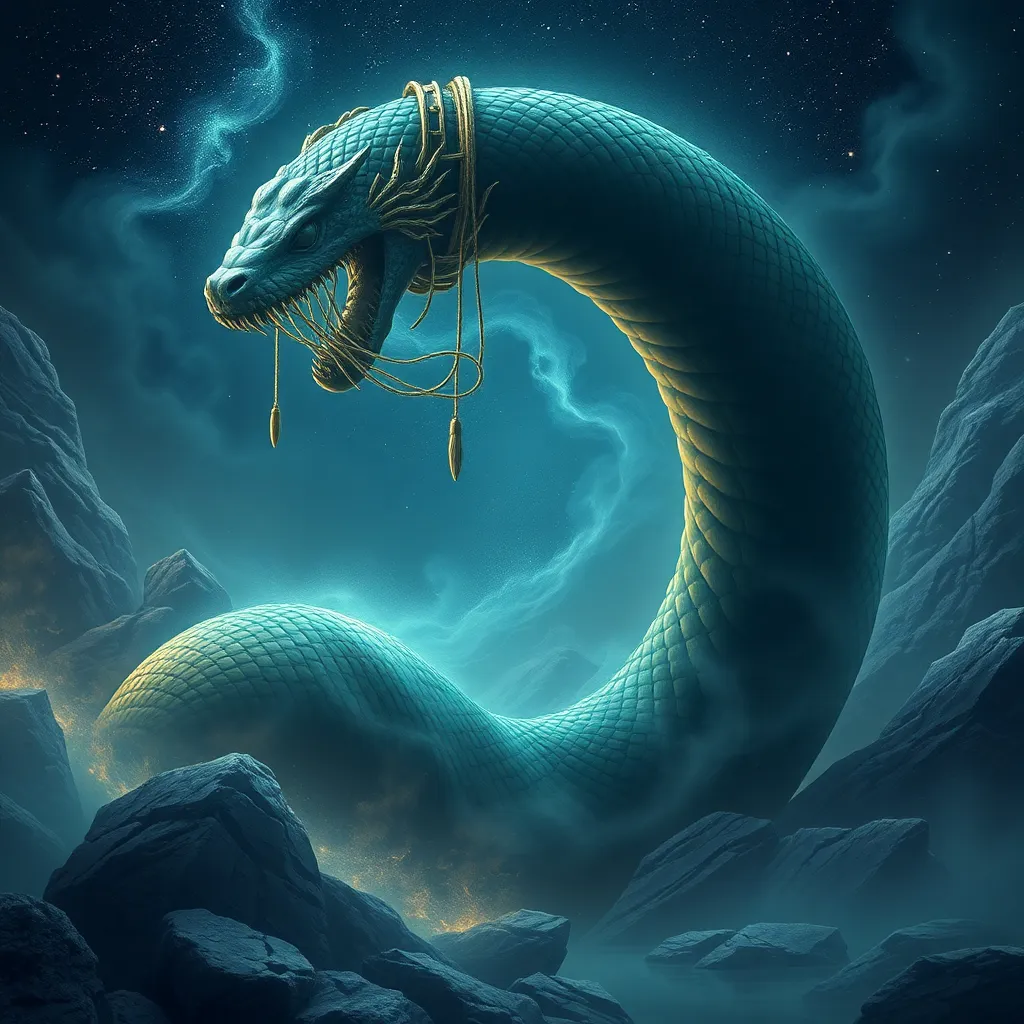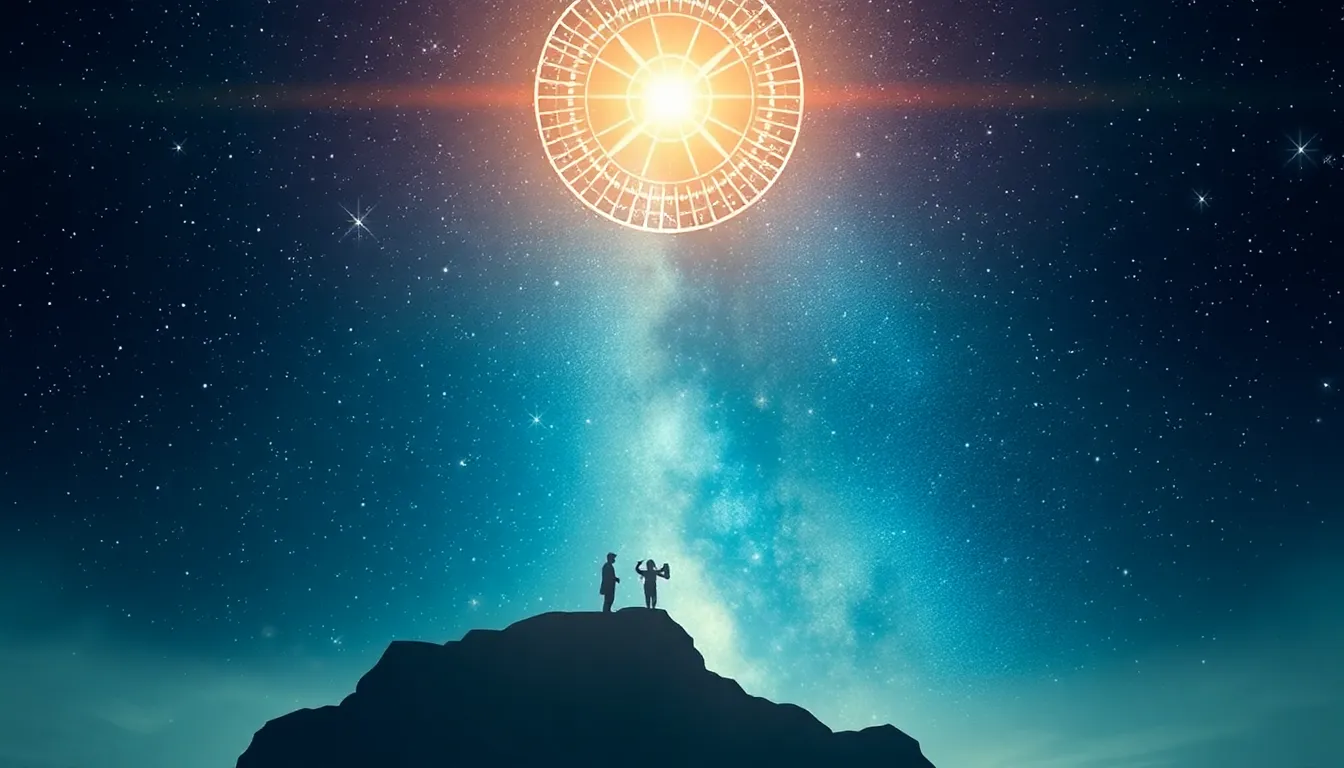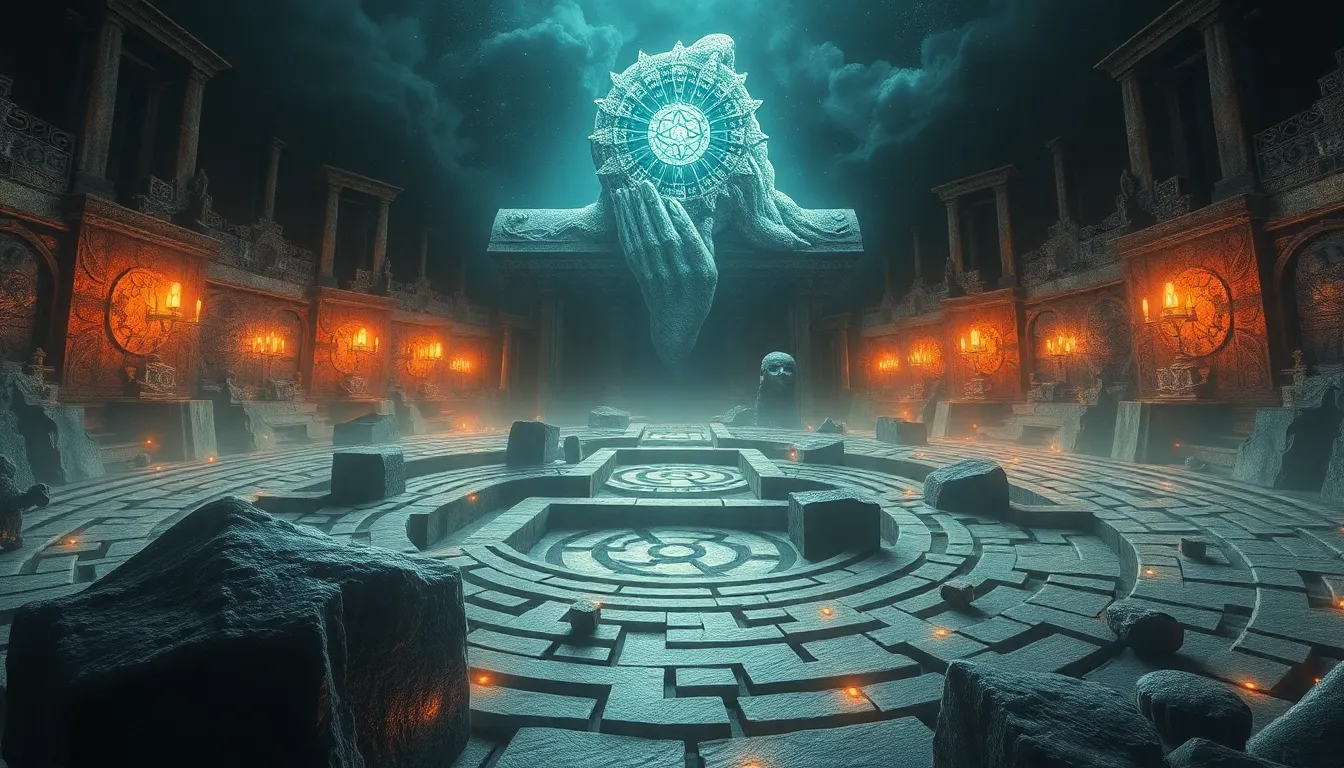The Serpent’s Secrets: Exploring Potential Hidden Meanings in Jörmungandr’s Myth
I. Introduction
Jörmungandr, also known as the World Serpent, is one of the most intriguing figures in Norse mythology. This enormous serpent, said to encircle the Earth, is deeply woven into the fabric of mythological narratives that explore themes of chaos, destruction, and the cyclical nature of existence. Jörmungandr’s significance extends beyond mere folklore; it represents profound concepts that resonate throughout history and across cultures.
The purpose of this article is to uncover the hidden meanings and interpretations of Jörmungandr’s myth. By delving into its origins, its relationships with other mythological figures, and its symbolic implications, we aim to shed light on the multifaceted nature of this legendary creature.
II. Jörmungandr’s Origins and Role in Norse Mythology
Jörmungandr’s origins can be traced back to the epic tales of Norse mythology, where he is the offspring of the trickster god Loki and the giantess Angerboda. This lineage places him at the crossroads of chaos and order, as he is both a creature of immense power and a being destined for conflict with the gods.
The relationship between Jörmungandr and the Aesir gods, particularly Thor, is fraught with tension and prophecy. The World Serpent is often seen as a rival to Thor, representing the chaotic forces of nature that the god of thunder must confront.
Serpents hold significant symbolism in many ancient cultures, often embodying dual aspects of creation and destruction. In this context, Jörmungandr serves as a powerful representation of the balance between these opposing forces.
III. The Cosmic Battle: Jörmungandr and Thor
One of the most compelling narratives involving Jörmungandr is the prophecy of Ragnarok, the cataclysmic battle that signifies the end of the world and the rebirth of a new one. In this fateful confrontation, Thor and Jörmungandr are destined to face each other, symbolizing the ultimate struggle between order and chaos.
The analysis of their battle reveals deeper themes:
- Chaos versus Order: Thor represents order and civilization, while Jörmungandr embodies chaos and the primal forces of nature.
- Cycle of Nature: The battle signifies the cyclical nature of the universe, where destruction leads to renewal.
- Destiny and Prophecy: The inevitability of their confrontation raises questions about fate and free will in Norse cosmology.
IV. The Symbolism of Serpents in Various Cultures
To understand Jörmungandr’s role in mythology, one must consider the broader cultural significance of serpents. Across various cultures, serpents are often dualistic symbols, representing both creation and destruction.
A comparative analysis of serpent myths reveals fascinating insights:
- Creation Myths: In many traditions, serpents are viewed as creators, often associated with fertility and life.
- Destruction Myths: Conversely, serpents can also symbolize destruction, chaos, and the underworld.
Jörmungandr occupies a unique position within this context, serving as a manifestation of both creation and destruction, embodying the delicate balance of nature’s cycles.
V. Environmental Interpretations: The Serpent as a Guardian of Nature
Jörmungandr’s deep connection to the ocean and the natural world provides another layer of interpretation. As a creature that encircles the Earth, he symbolizes the boundaries of nature and the oceans’ vastness.
Environmental symbolism in Jörmungandr’s myth can be interpreted in several ways:
- Guardian of Nature: The World Serpent can be seen as a guardian of ecological balance, representing the interconnectedness of all living things.
- Warning of Chaos: His existence serves as a reminder of the chaos that can ensue when nature is disrespected or disrupted.
- Reflection of Human Impact: The myth encourages reflection on humanity’s relationship with nature and the consequences of imbalance.
VI. Psychological Perspectives: Jörmungandr in the Collective Unconscious
From a psychological standpoint, Jörmungandr can be analyzed through the lens of Carl Jung’s theories, particularly his concept of archetypes. Jung posited that serpents often represent deep-seated fears and challenges within the human psyche.
In this context, Jörmungandr embodies:
- Inner Fears: The serpent represents the fears we must confront to achieve personal growth and transformation.
- Shadow Self: Jörmungandr can symbolize the darker aspects of ourselves that we often ignore but must integrate for wholeness.
- Universal Struggles: The myth’s relevance in modern psychology highlights the timeless nature of human struggles against chaos and fear.
VII. Contemporary Relevance: Jörmungandr in Modern Media and Culture
Jörmungandr’s myth continues to resonate in contemporary media, literature, film, and art. His portrayal often reflects modern themes of environmentalism, chaos, and the struggle for balance in an increasingly complex world.
Some notable representations include:
- Literature: Jörmungandr appears in various novels and retellings of Norse mythology, often as a symbol of chaos.
- Film: Movies that explore Norse mythology frequently depict the World Serpent as an antagonist representing nature’s fury.
- Art: Artists use Jörmungandr’s imagery to express themes of duality, chaos, and the interconnectedness of life.
These interpretations reflect ongoing societal concerns and the enduring legacy of Jörmungandr in popular culture.
VIII. Conclusion
In summary, the myth of Jörmungandr offers a rich tapestry of insights and interpretations. From his origins in Norse mythology to his role as a symbol of chaos and balance, the World Serpent continues to captivate our imaginations.
The ongoing intrigue surrounding Jörmungandr’s myth underscores the importance of exploring hidden meanings in mythology. By examining these narratives, we can gain valuable insights into our own lives, our fears, and our relationship with the natural world.
Ultimately, Jörmungandr serves as a reminder of the delicate balance between creation and destruction, order and chaos, inviting us to reflect on our place within this intricate web of existence.



